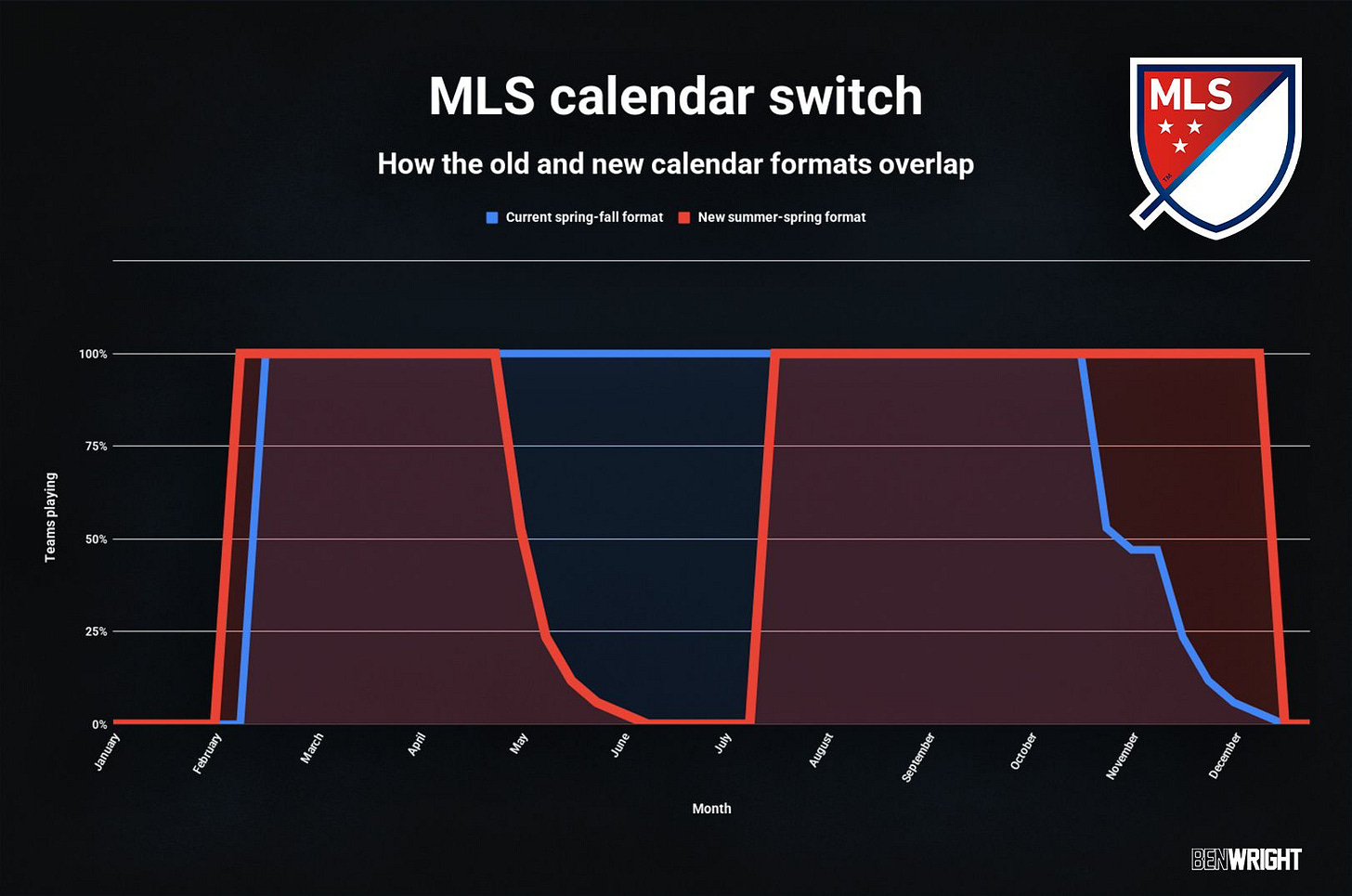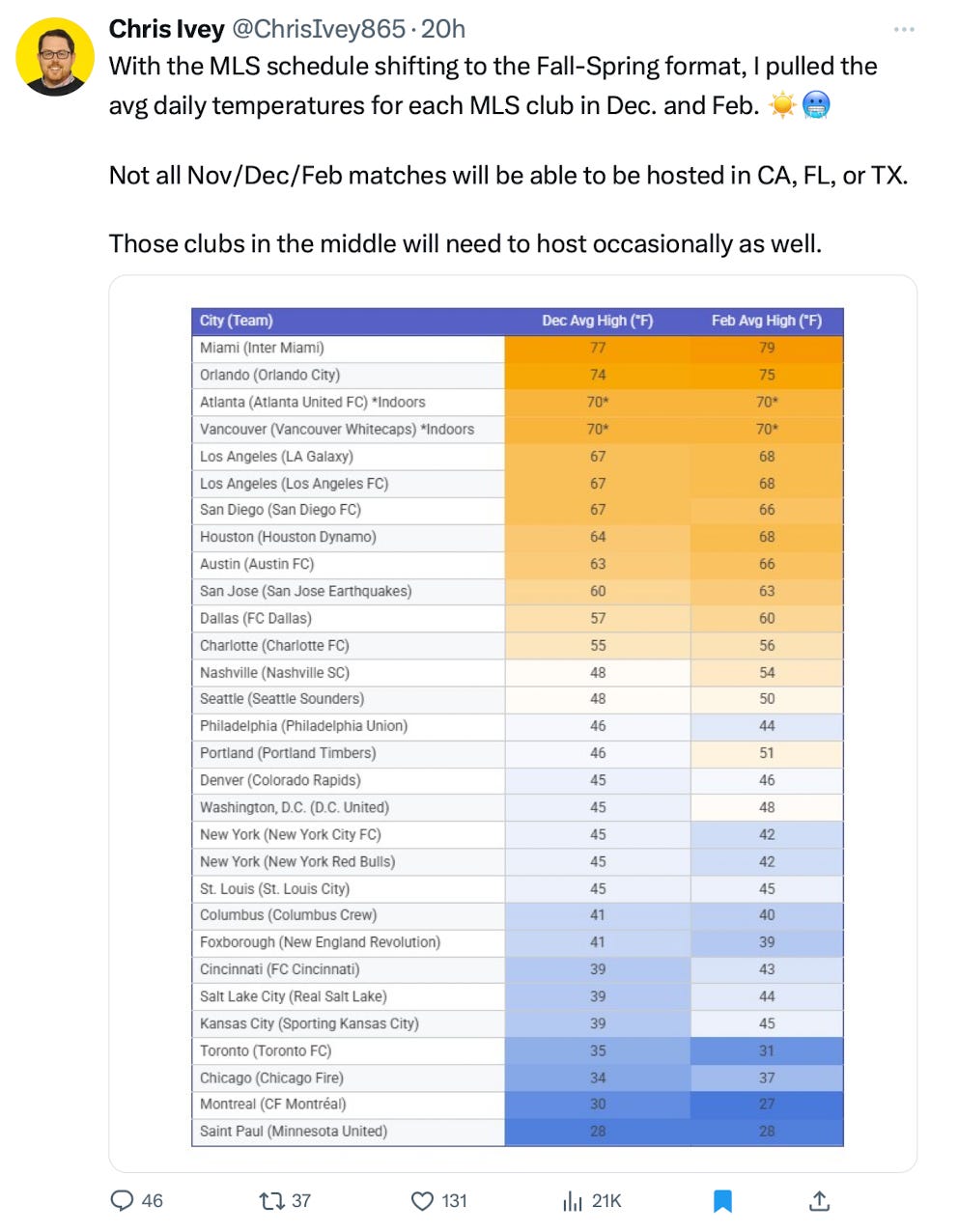What You Need To Know: MLS Schedule Change
Can we switch to the Metric System next?
Last week MLS Commissioner Don Garber confirmed one of the worst kept secrets in MLS: The league would be moving to a traditional winter calendar after the US hosts the World Cup next year.
This change has been discussed for years and has gained steam recently as MLS continues to be more involved with transfers around the world and more players are involved with their National Teams. The alignment of transfer windows has caused myriad issues when it comes to player availability and this should help to resolve that. Austin’s own Rodolfo Borrell has lamented it many times that the primary MLS window is mid-season in Europe and players in mid-season form then have to go through training camp, or conversely, getting players who are still prepping for the season into a team 65-75% done with their seasons proves difficult. MLS Commentator David Gass even talks about players who come to MLS mid season who underwhelm and don’t perform to their best until the following season.
This will help MLS teams transfer in and out with every other league in the world. MLS will no longer be a league with a quirky schedule (we’ll just have to satisfy our quirkiness with the roster rules) and will help it be taken more seriously around the World. It will help prevent situations where an international break hits right before the playoff start and also after the first round where we have a two week delay before round 2, losing all momentum.
The schedule change won’t begin until 2027 and will involve a shortened “sprint season” in the Spring because both the footballing and business sides don’t want to go nearly a year without matches. This probably chaotic championship will be a fun way to bridge the gap similar to the “MLS is Back” COVID Cup that will either be a really important trophy or meaningless depending on if your team wins it.
Having a split season isn’t that different than what MLS does now with Leagues Cup or will do in 2026 with the World Cup Break. It trades a few summer matches for a few winter matches and for Austin we get to beat the heat and enjoy more matches in mild temperatures (as I write this in the middle of November the high today is 80 degrees) Which should help with attendance and interest. The break from November to January prevents MLS Cup and playoffs competing against football, that part of the season now occurs during the sports doldrums of late Spring and also eliminates issues for MLS teams who are dual tenants with NFL teams to be able to host and schedule playoff games in a more reasonable manner.
MLS continues to work closer and play more matches with Liga MX who use a similar season structure with their regular split into “Apertura” and “Clausura” seasons that run from July to November and then January to May. This is a schedule that works elsewhere in the world and will work here.
For the more northern climates having to host in winter, the break mitigates most of that and with some smart scheduling it can prevent too many snow games, even though those are objectively fun and something I’d like to see MLS embrace. Last week we got to see the “Icycle Kick” win the Canadian Premier League.
One of the issues that the league runs into is its geographic size. That’s usually a hinderance in terms of travel, but now the league can use that to its advantage. They can schedule the coldest weather areas on the road at the end/beginning of the winter break and use climates like Austin, Houston, and Miami or dome cities like Vancouver at Atlanta to balance things out.
This is a positive for a league looking to grow and shows a willingness to step into being a bigger part of World Soccer. MLS 1.0 was about setting a foundation, 2.0 was keeping the league alive, 3.0 was making it a major sport in the US, and 4.0 is getting it taken seriously around the world. This is MLS 4.0.





